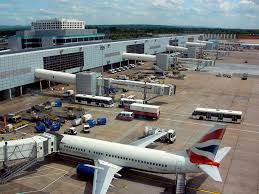
During the last two Christmas Seasons, little drones shut down big airports – Atlanta Hartfield (the largest airport in the United States) and Gatwick Airport (the second largest airport in England).

Unmanned Aerial Vehicles (or UAVs), or drones, were primarily developed for military use beginning in the middle of the 20th century. The United States began work in earnest on the devices after Gary Francis Powers was shot down in his U-2 over Russian in 1960. See: May Day

The United States flew classified UAVs during the Vietnam War. However, the Israeli’s are leaders in the field. They used drones to cut losses due to Surface to Air Missiles (SAMs) during the Yom Kippur War of 1973. The United States used the drones effectively in both Gulf War and in the War on Terror. Currently, drones are used successfully to target high level Al-Qaida leadership.
Civilian Drones

Recently civilian use of drones has become problematic. There are now over 1,000,000 registered drone users in the United States alone. An excellent article on the growth of civilian drones can be found in the News Ledge The Chinese, French and US lead the market in manufacturing.
The alarming trend is the shutdown of large airports by small drones. The chances of a small (less than a half pound) drone doing damage to a large commercial aircraft is small. In fact, a turkey vulture in the engine would do much more damage. Be that as it may, drones are restricted for use within 5 miles of an airport. FAA rules

On December 19, a reported drone shut down London’s Gatwick Airport for two days. Over 1,000 flights were diverted or grounded which effected 140,000 passengers, most traveling for Christmas. This follows the shutdown of the world’s busiest airport, Atlanta, during Christmas travel in 2017.
It is no secret that an operator is not allowed to fly a drone in an airport’s airspace. It is no secret that an operator is not allowed to drive a car drunk. However, as long as there are irresponsible people, there will be both. What MADD (Mothers Against Drunk Drivers) did for drinking and driving, must be done for drone flyers in airports. Although it is more difficul to apprehend them, when “drunk droners” fly into airport airspace, they need to pay dearly.
Footnote: The FAA is working with civilian drone groups to come up with frone regulations that make sense. Unfortunately, as many have pointed out, sensible regulations do not stop irresponsible people. FAA Initiatives
